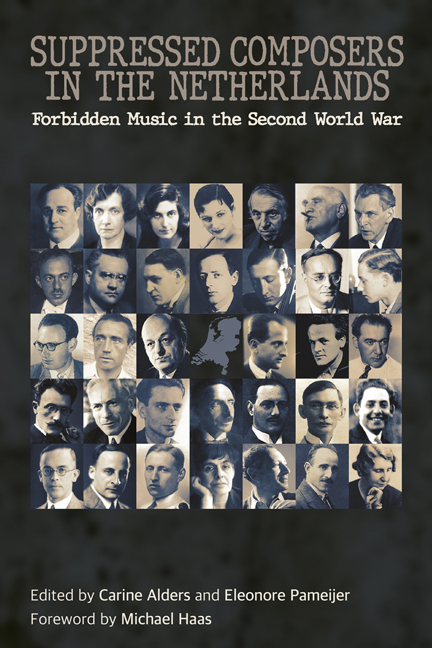3 - Henriëtte Bosmans
Published online by Cambridge University Press: 09 May 2024
Summary
Henriëtte Bosmans had already enjoyed a well-established reputation as a pianist in pre-war Dutch musical life, although as a female composer she received less recognition in the Netherlands, except from colleagues and friends. Her considerable output includes orchestral works, chamber music and many songs. During the war she was not allowed to appear in public and had to support herself with ‘underground’ house concerts.
Henriëtte Hilda Bosmans was born on 6 December 1895, the only child of Henri Bosmans (1856–96) and Sara Benedicts Bosmans (1861–1949). Her father, who had been the principal cellist of the newly established Concertgebouw Orchestra, died when she was only a baby. Her mother, a piano teacher at the Amsterdam Conservatoire, gave Henriëtte her first piano lessons. At seventeen she passed her final piano examination at the Maatschappij tot Bevordering der Toonkunst (Society for the Advancement of Music). She studied music theory and composition with Jan Willem Kersbergen and composition with Willem Pijper, who happened to be her neighbour at the time. During the 1930s Bosmans performed regularly with the Concertgebouw Orchestra. At one of their prestigious Thursday evening concerts in 1936, she was the soloist in César Franck's Variations symphoniques, with Willem Mengelberg conducting. The critic Herman Rutters, writing in the Algemeen Handelsblad, praised her interpretation as ‘shrewd, intuitive, with pure, vibrant and noble musicianship’.
The cellist Marix Loevensohn6 often performed her Poème for cello and orchestra, which she had written for him in 1926, and Louis Zimmermann, concert-master of the Concertgebouw Orchestra, premiered the Concert Piece for violin and orchestra in 1935, conducted by Mengelberg. Her international breakthrough came in 1938 when the violinist Willem Noske8 played the Concert Piece, full of ‘Oriental moods’, in Prague and Paris. In October 1941 it was also performed several times in the United States by the violinist Ruth Posselt. The prospect of further international engagements was then curtailed by the war.
Interference by the Nazis in cultural life was in evidence long before the war. In 1933 the Maandblad voor Hedendaagsche Muziek (‘Monthly Magazine for Contemporary Music’), published in Amsterdam from1931 to 1933, ran an article entitled ‘Terror in German
- Type
- Chapter
- Information
- Suppressed Composers in the NetherlandsForbidden Music in the Second World War, pp. 47 - 56Publisher: Boydell & BrewerPrint publication year: 2024



